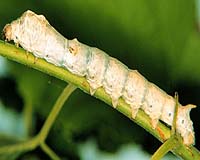 |
Washington DC (SPX) Oct 01, 2010 Dairy farmers can greatly reduce ammonia emissions from their production facilities by injecting liquid manure into crop fields below the soil surface, according to research by the U.S. Department of Agriculture (USDA). These findings, which resulted from a study conducted by soil scientist April Leytem and agricultural engineer David Bjorneberg with USDA's Agricultural Research Service (ARS), could help Idaho dairy farmers increase nitrogen capture in the soil and protect air quality from agricultural ammonia emissions. ARS is USDA's principal intramural scientific research agency. The scientists work at the ARS Northwest Irrigation and Soils Research Laboratory in Kimberly, Idaho, and conducted their study on four dairy farms in Idaho, a state where the number of milk cows has increased 88 percent in the last decade. They applied liquid dairy manure stored in containment lagoons either by surface broadcasting, using a rolling tine aerator to incorporate manure into the top four inches of the soil surface, or injecting the manure 12 inches below the soil surface. Over the three-day study period, the greatest concentration of emissions was recorded during the 48 hours immediately following the manure applications, with the majority of emissions occurring within 24 hours. Surface broadcasts resulted in average ammonia concentrations of 0.17 milligrams of nitrogen per cubic meter, and shallow incorporation resulted in average ammonia emission rates of 0.16 milligrams of nitrogen per cubic meter. Fields where manure had been amended using subsurface injection had average ammonia concentrations of 0.06 milligrams of nitrogen per cubic meter-65 percent lower than emission rates resulting from soil amendments via shallow incorporation or surface broadcast. Leytem and Bjorneberg concluded that dairy farmers who use dairy manure to amend soils could best reduce ammonia emissions by using subsurface injection, and that immediately incorporating manure deep into the soils during its application can limit losses of manure nitrogen from ammonia volatilization. Results from this research were published in Professional Animal Scientist.
Share This Article With Planet Earth
Related Links US Dept of Agriculture Research, Education and Economics Farming Today - Suppliers and Technology
 Genetically Engineered Silkworms To Produce Artificial Spider Silk
Genetically Engineered Silkworms To Produce Artificial Spider SilkNotre Dame IN (SPX) Oct 01, 2010 A research and development effort by the University of Notre Dame, the University of Wyoming, and Kraig Biocraft Laboratories, Inc. has succeeded in producing transgenic silkworms capable of spinning artificial spider silks. "This research represents a significant breakthrough in the development of superior silk fibers for both medical and non-medical applications," said Malcolm J. Fraser ... read more |
|
| The content herein, unless otherwise known to be public domain, are Copyright 1995-2010 - SpaceDaily. AFP and UPI Wire Stories are copyright Agence France-Presse and United Press International. ESA Portal Reports are copyright European Space Agency. All NASA sourced material is public domain. Additional copyrights may apply in whole or part to other bona fide parties. Advertising does not imply endorsement,agreement or approval of any opinions, statements or information provided by SpaceDaily on any Web page published or hosted by SpaceDaily. Privacy Statement |